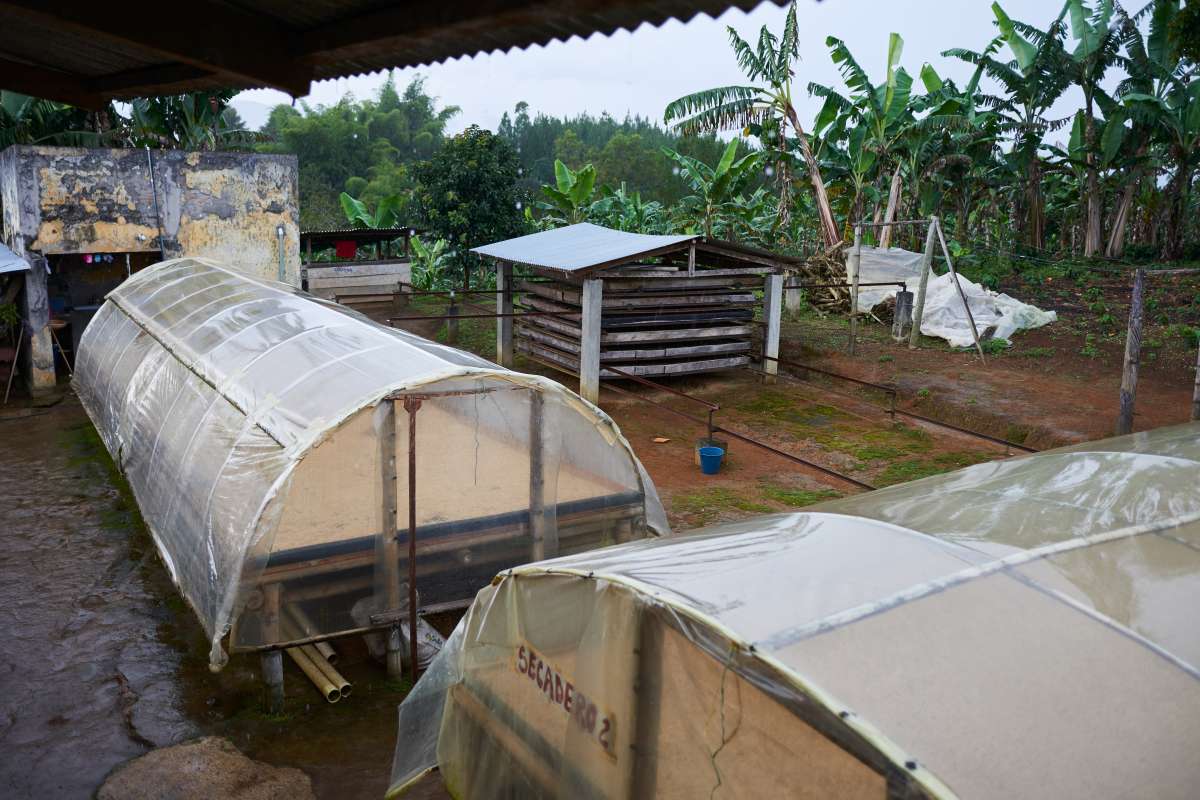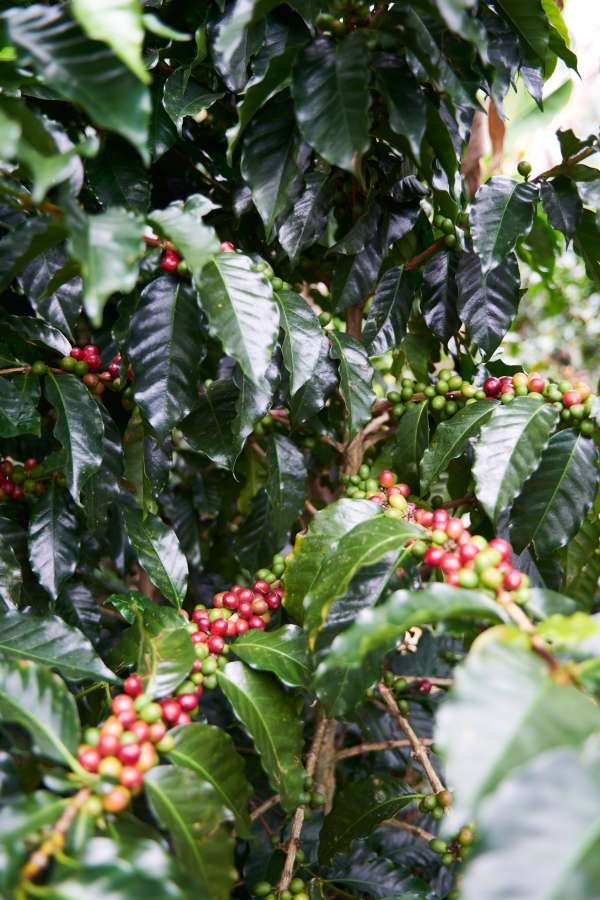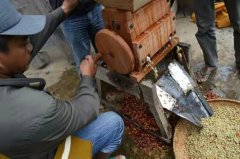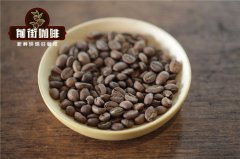Flavor and taste characteristics of Colombian Zikadura Coffee introduction to passionfruit anaerobic washing coffee beans
Coffee information
Producing area: Cymbidium Colombians
Manor: Montblanc Manor
Altitude: 1900 m
Variety: purple Kaddura
Treatment method: passionfruit yeast anaerobic washing treatment
Grade: Supremo
Production season: 2021

Production area introduction
Cymbidium Province of Colombia is located in southern Colombia at the confluence of the central and eastern mountains of the Andes. The coffee growing area of Huilan is centered on Pitalito, which is mainly planted by small farmers. In the past ten years, they have worked together to produce boutique coffee that highlights the local characteristics of the region. The use of manual harvesting, attentive handling and careful post-harvest sorting all help to raise awareness of the area.

In recent years, the Coffee Council of Huilan Province has had close exchanges with the Colombian National Federation of Coffee growers to strengthen the planting level and treatment technology of Coffee growers of Coffee Coffee, especially the development of anaerobic treatment technology in recent years. Colombian coffee is also moving in a new direction.

Montblanc Manor
Montblanc Manor is located on the winding mountain road of Velida La Tocola in Pitalito, a coffee estate run by landowner Rodrigo Sanchez Valencia, whose coffee cultivation dates back to his grandfather. Montblanc Manor is located on the top of the hill, with a land area of about 18 hectares, with complete treatment equipment such as wet grinders and dryers.

In 2002, Rodrigo participated in a local coffee training program that teaches the children of local coffee producers about cup testing. Before that, he and his family had never considered the knowledge of coffee flavor. By learning to distinguish the flavor of coffee, he and his father and grandfather were able to establish a connection between the farming techniques they used and the properties produced in the cup test.
At the same time, Rodrigo also began to learn about cup test competitions, through which Rodrigo learned about the quality of coffee between plots within his estate. He realized that after his estate won the cup test contest for a year, he did not continue to get a good place, so he decided to study how to consistently produce quality coffee. This prompted him to explore the trees planted at Montblanc Manor, where he discovered the varieties his grandfather planted in the 1980s. It was at this time that Zikadura was noticed and distinguished.

Coffee variety
This coffee belongs to Zikadura, a variety of Kaddura. It is derived from a natural variety of low probability in Red Kadura. Zikadura is characterized by the growth of copper-purple leaves at the top of the plant, and the fruit is dark purple when ripe. At that time, Rodrigo screened 26 coffee trees from more than 20, 000 coffee trees on his estate with the characteristics of Zikadura. Zikadura is a variety that survived Colombian leaf rust in 2012. It has a unique flavor, high disease resistance and high Bailey sugar content.

Coffee processing method
Montana Blank Manor is famous for its scientific post-processing process and high grasp of rare varieties, especially the fermentation of post-processing requires precise control of temperature, humidity, sweetness, sugar, oxygen and other variables. in order to meet the growing demand and standards for flavor and taste.
This batch of coffee is treated with passion fruit yeast anaerobic water treatment. Montana Blank Manor first measures the sugar content of the harvested coffee beans by measuring their sugar content, according to the indicated sugar content, and then specifies the appropriate treatment method. Coffee with a Bailey sugar content of 24-27 degrees is used as a washing treatment. First, the peel and pulp of the coffee fruit are removed, and then the coffee fruit and passion fruit are fermented. The high sugar content provides an excellent environment for the growth of bacteria to cultivate the bacteria and seal them with shell beans in a barrel for anaerobic fermentation.

The fermentation time of the coffee is controlled between 28 and 32 hours, then washed fully with clean water, then transferred to a solar dryer for a few days, and finally moved to a cool elevated bed to complete the drying process.
Qianjie coffee roasting table

Qianjie coffee cup test information

Suggestion on brewing coffee in Qianjie
Filter cup: V600001
Water temperature: 90-91 ℃
Powder content: 15g
Powder / water ratio: 1:15
Degree of grinding: medium and fine grinding (Chinese standard No. 20 screen pass rate 80%)

Cooking technique: three-stage extraction. Steam with 30 grams of water for 30 seconds, small water flow around the circle to 125 grams for sectional injection, water level drop is about to expose the powder bed, continue to inject water to 225 grams to stop injection, and so on when the water level drop is about to expose the powder bed, remove the filter cup, (steaming starts timing) the extraction time is 2 minutes 39 percent 00 ".
Important Notice :
前街咖啡 FrontStreet Coffee has moved to new addredd:
FrontStreet Coffee Address: 315,Donghua East Road,GuangZhou
Tel:020 38364473
- Prev

Flavor characteristics of Mantenin Coffee Bean treated by Wet planing method
After the guide has tasted the coffee, he will be shocked by the aroma of the herbs. And what does the formation of this unique flavor have to do with Indonesia's unique coffee processing process of wet planing? What's so special about wet planing? In fact, we can also see the clue from the name, wet planing means that the raw beans of coffee are not dry.
- Next

There are wrinkles on the surface of coffee beans. Are they defective beans? The reason for the oil on the surface of coffee beans?
Why is the surface of coffee beans crumpled? are they bad beans? The coffee beans are out of oil. how long have you been putting them? This is also the question that many guests have about coffee beans! Qianjie Coffee will answer your questions through this article. Why do coffee beans wrinkle? People's impression of coffee beans should be smooth, and wrinkled lines may appear.
Related
- Beginners will see the "Coffee pull flower" guide!
- What is the difference between ice blog purified milk and ordinary milk coffee?
- Why is the Philippines the largest producer of crops in Liberia?
- For coffee extraction, should the fine powder be retained?
- How does extracted espresso fill pressed powder? How much strength does it take to press the powder?
- How to make jasmine cold extract coffee? Is the jasmine + latte good?
- Will this little toy really make the coffee taste better? How does Lily Drip affect coffee extraction?
- Will the action of slapping the filter cup also affect coffee extraction?
- What's the difference between powder-to-water ratio and powder-to-liquid ratio?
- What is the Ethiopian local species? What does it have to do with Heirloom native species?

